
The Karate Kid Part II (1986)
The Karate Kid Part II is a 1986 American martial arts drama film written by Robert Mark Kamen and directed by John G. Avildsen. It is the second installment in the Karate Kid franchise and the sequel to the 1984 film The Karate Kid, starring Ralph Macchio and Pat Morita. The Karate Kid Part II follows Daniel LaRusso (Macchio), who accompanies his karate teacher Mr. Miyagi (Morita) to see his dying father in Okinawa, only to encounter an old friend-turned-rival with a long-harbored grudge against Miyagi. Following the success of the first installment, preparation for a sequel began immediately. Upon completion of the final script, Macchio and Morita were re-signed and additional casting took place between May and July 1985.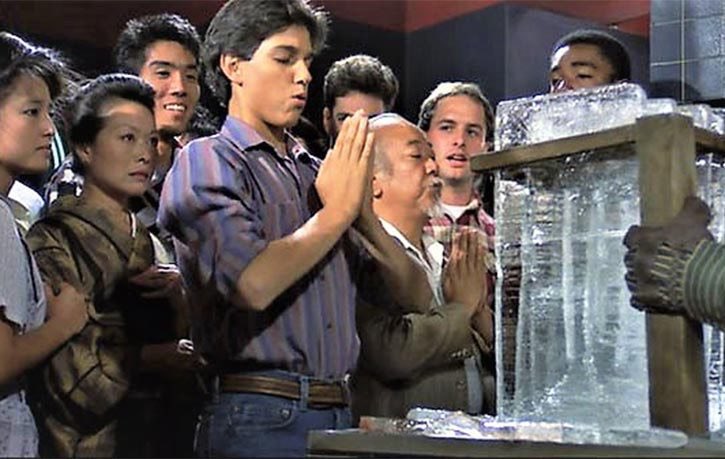
Principal photography began in September 1985 in Los Angeles, and filming completed in December 1985. Locations included Oahu, which was used to represent Okinawa in the film.
The Karate Kid Part II was theatrically released in the United States on June 20, 1986. The film received mixed reviews, with critics praising Morita’s performance as well as the new location and characters, while others criticized elements of the storyline, the antagonists, and some of the action scenes. The film was a commercial success, grossing $130 million worldwide, making it one of the highest-grossing films of 1986. A sequel titled The Karate Kid Part III was released in 1989.
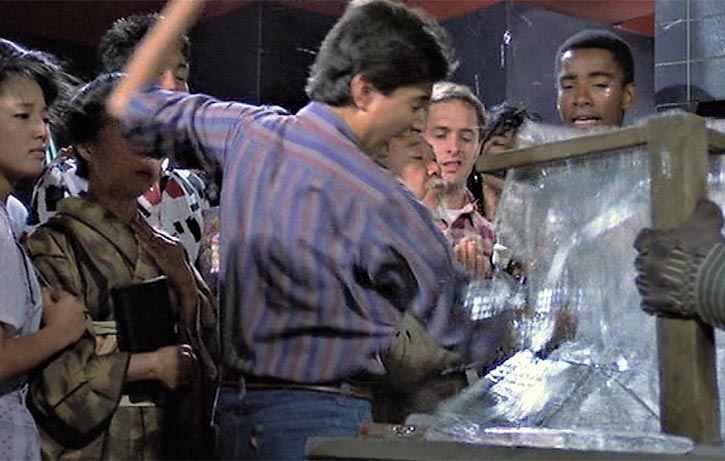
Plot.
After his dojo’s loss in the 1984 All-Valley Karate Tournament, a furious John Kreese attacks his student Johnny Lawrence in the parking lot. Miyagi intervenes and passively immobilizes Kreese. He threatens a deadly blow but instead comically tweaks Kreese’s nose and walks away. Johnny and his friends leave a humiliated Kreese and Cobra Kai behind. Six months later, in June 1985, Daniel and Ali have broken up, and Daniel is staying with Miyagi after his mother accepts a job in Fresno. Miyagi receives a letter notifying him that his father is dying, prompting him to return to his home village on Okinawa Island. He tells Daniel that many years ago, he fell in love with a woman named Yukie. She was arranged to marry his best friend Sato, son of the richest man in the village and fellow karate student of his father. Upon announcing his intentions to marry Yukie, Sato challenged him to a fight to the death. Rather than fight, however, Miyagi left the country. Daniel decides to accompany him back to Okinawa.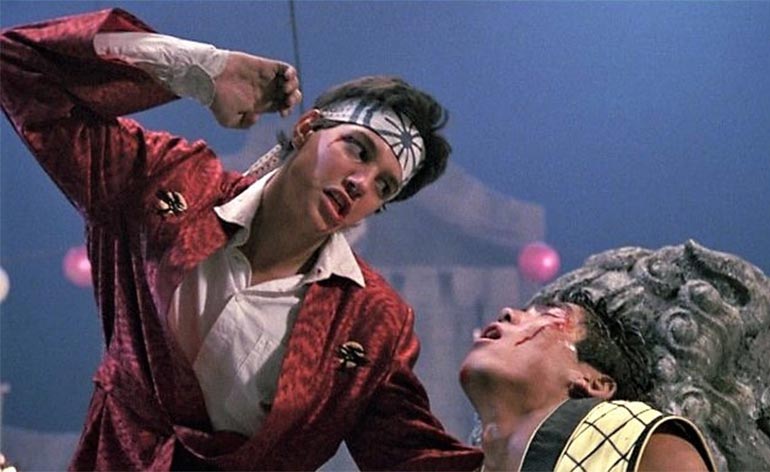
Upon arrival, Miyagi and Daniel are greeted by Chozen Toguchi, who drives Miyagi and Daniel to one of Sato’s warehouses and reveals he is Sato’s nephew. Sato appears and demands to fight Miyagi, who adamantly refuses. Arriving at the village, Miyagi and Daniel are welcomed by Yukie and her niece Kumiko. They discover that Sato has become a rich industrialist whose supertrawlers have destroyed the local fish population, impoverishing the other villagers. They are forced to rent property from Sato, who owns the village’s land title. Yukie reveals that she never married Sato because of her love for Miyagi.
Miyagi’s father dies, and Sato gives him three days to mourn out of respect before their fight. Miyagi shows Daniel the secret to his family’s karate – a handheld drum that twists back and forth illustrating the “drum technique”, a counter-striking karate move that Daniel begins to practice. Daniel and Kumiko begin to develop a romance.
RELATED:
No Retreat, No Surrender (1986) Biography, Plot, Fight.
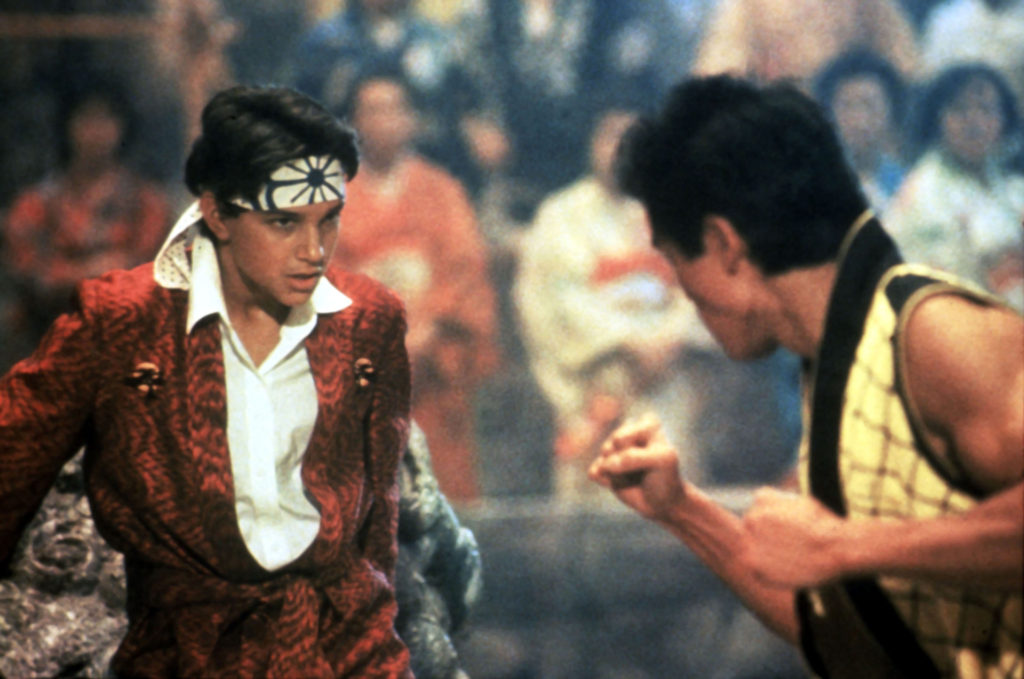
Production, Filming.
The opening scene takes place immediately following the finale of the first film to seamlessly tie the two together. It was originally planned as the ending for the first film, although it was not shot until after the second film’s production began. Principal photography took place in Oahu, Hawaii, in the northeastern area of the island known as the “windward side”. The local countryside in modern-day Okinawa had been drastically changed due to the presence of military bases, so other locations in both Japan and Hawaii were scouted as alternative filming locations. Filmmakers selected a property in Oahu that was privately owned by a retired local physician who agreed to allow a portion of the land to be used in the film. To form the Okinawan village portrayed in the film, seven authentic replicas of Okinawan houses were constructed along with more than three acres of planted crops. Fifty Okinawa-born Hawaii residents were also recruited as film extras. Filming began on September 23, 1985, and ended on December 20, 1985.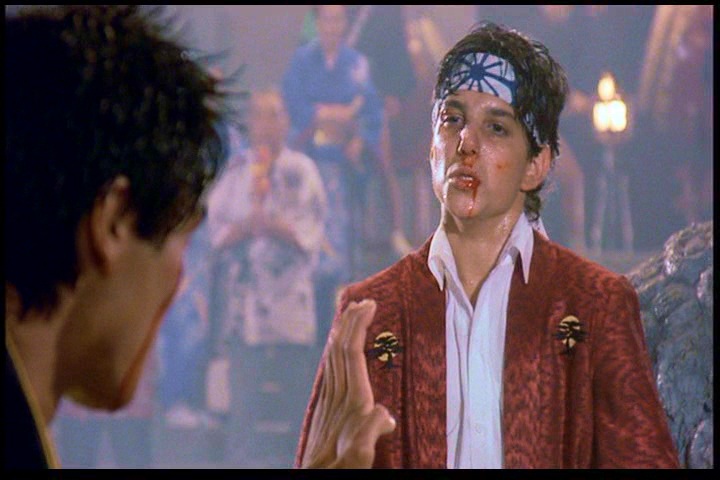
Box office.
The Karate Kid Part II opened in 1,323 theaters across North America on June 20, 1986. In its opening weekend, the film ranked first in its domestic box office grossing $12,652,336 with an average of $9,563 per theater. The film earned $20,014,510 in its opening week and ended its run earning a total of $115,103,979 domestically. In the United Kingdom, the film grossed £2,313,517 ($3,391,272) at the box office. The film grossed a total of $130 million worldwide, matching the box office total of the original film. In terms of box office admissions, the film sold 31,025,300 tickets in the United States. It also sold 2,625,169 tickets in France and Germany, and 2,518,483 tickets in Spain and Sweden, adding up to at least 36,168,952 tickets sold in the United States and Mainland Europe.Cast:
- Ralph Macchio as Daniel LaRusso
- Pat Morita as Mr. Miyagi
- Nobu McCarthy as Yukie
- Tamlyn Tomita as Kumiko
- Yuji Okumoto as Chozen Toguchi
- Danny Kamekona as Sato
- Charlie Tanimoto as Miyagi Chōjun
- Joey Miyashima as Toshio
- Marc Hayashi as Taro
- Martin Kove as John Kreese
- William Zabka as Johnny Lawrence
- Tony O’Dell as Jimmy
- Ron Thomas as Bobby
- Rob Garrison as Tommy
- Chad McQueen as Dutch
- Pat E. Johnson as Referee
- Bruce Malmuth as Announcer
